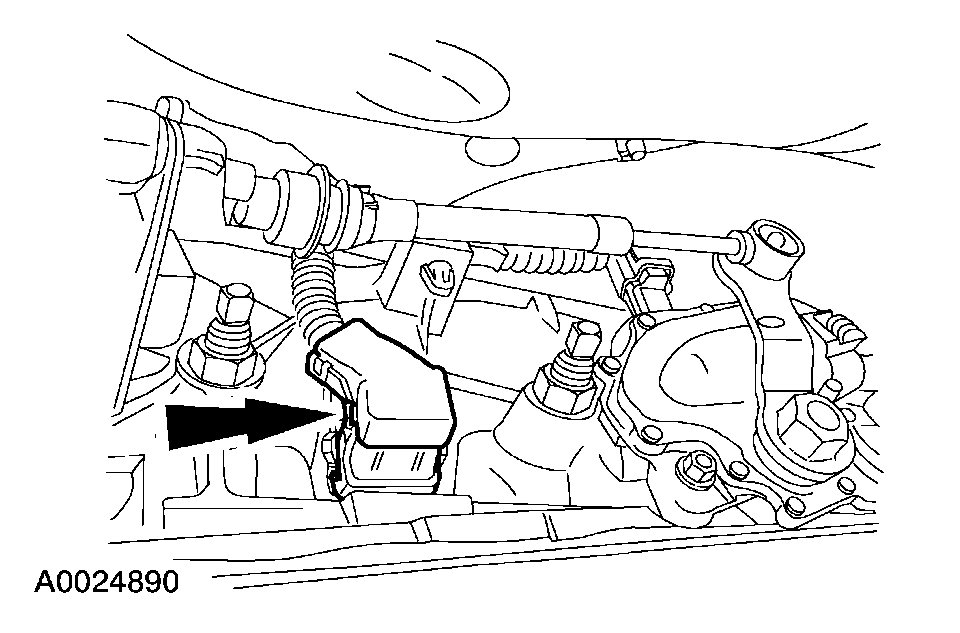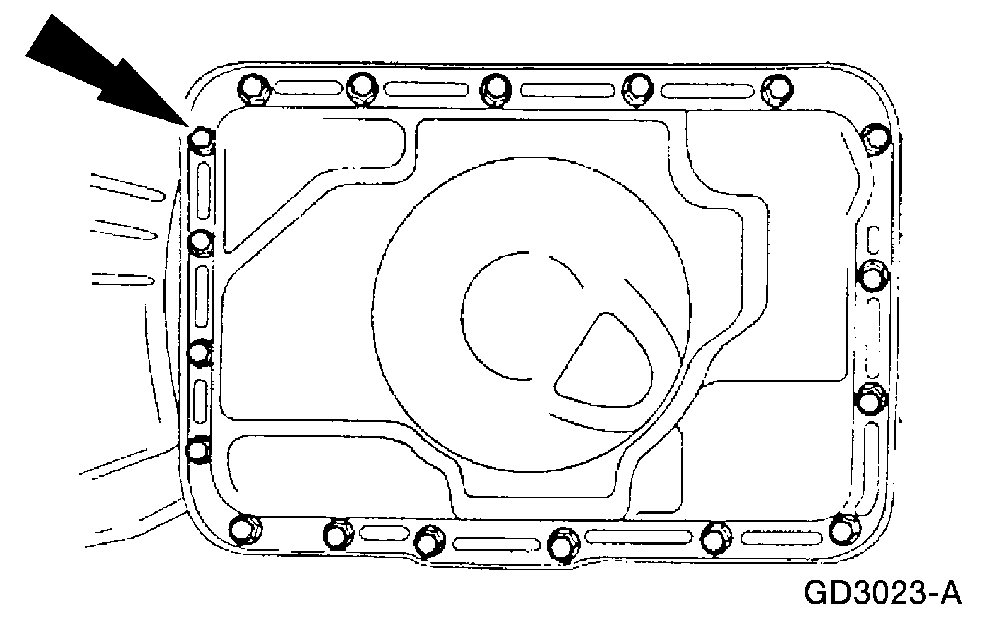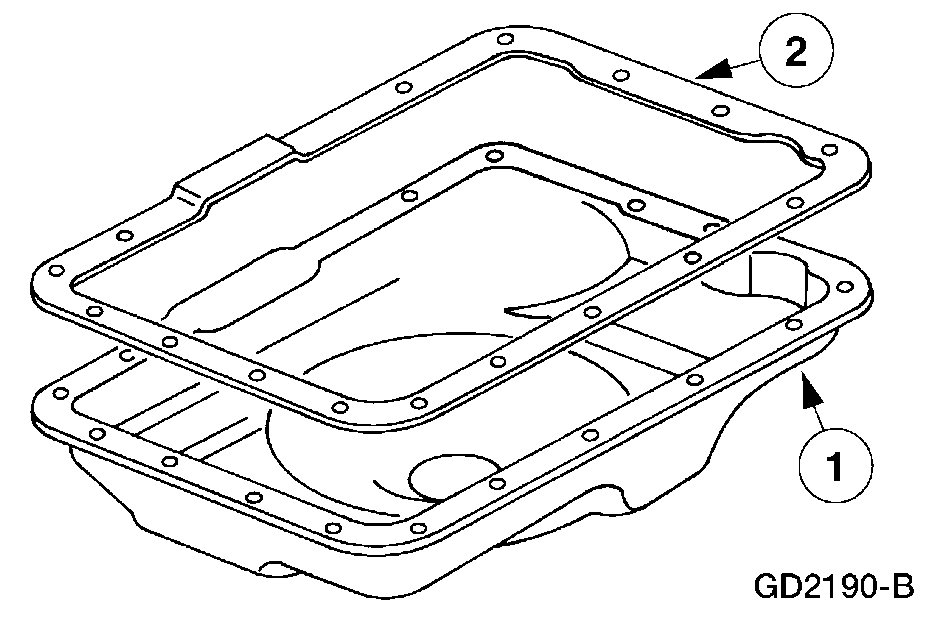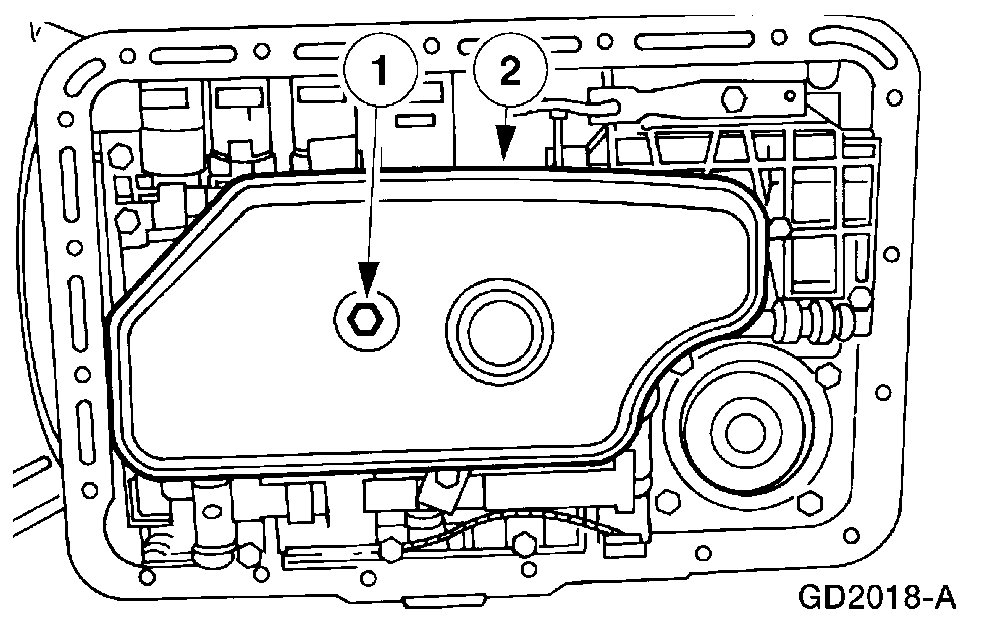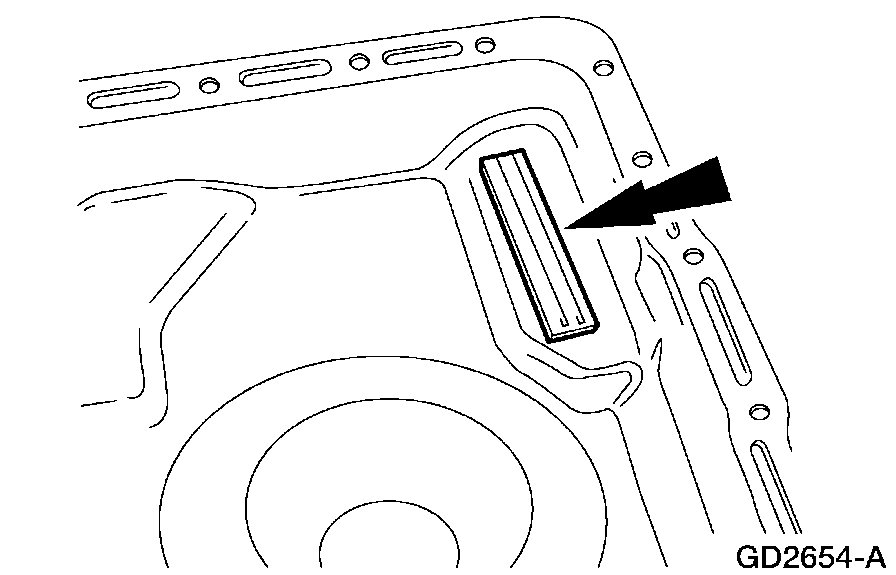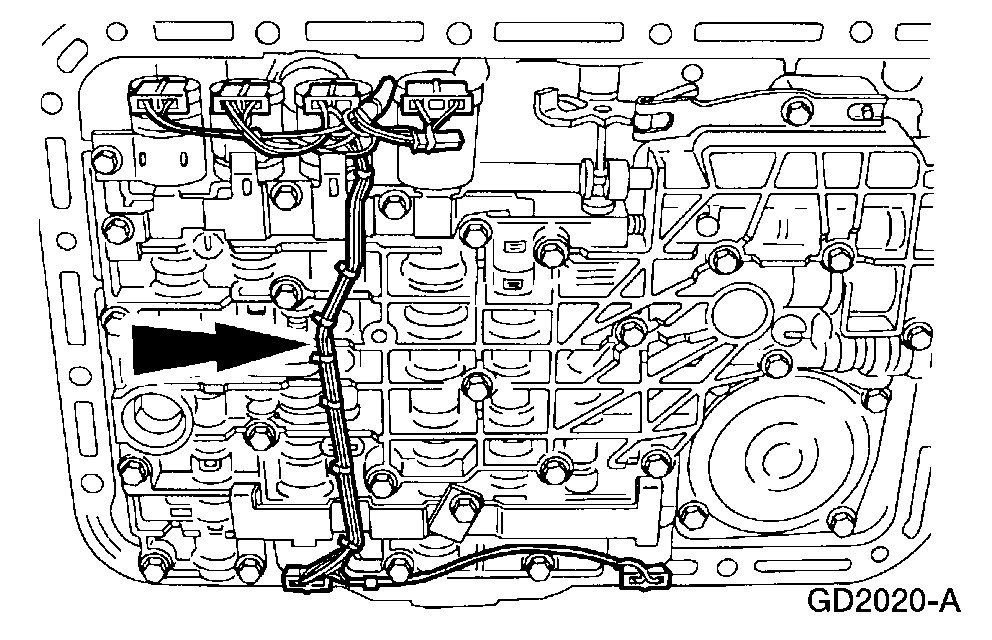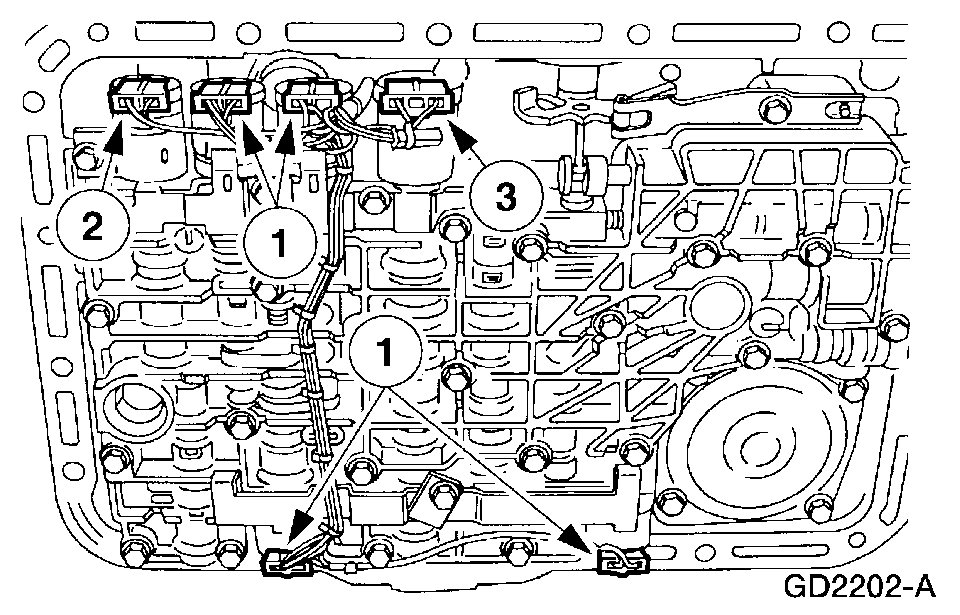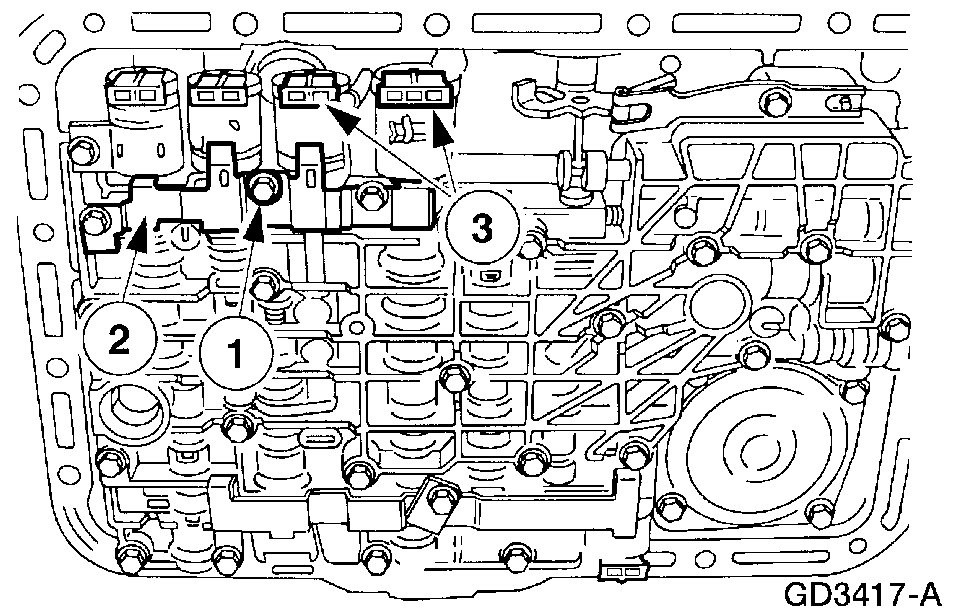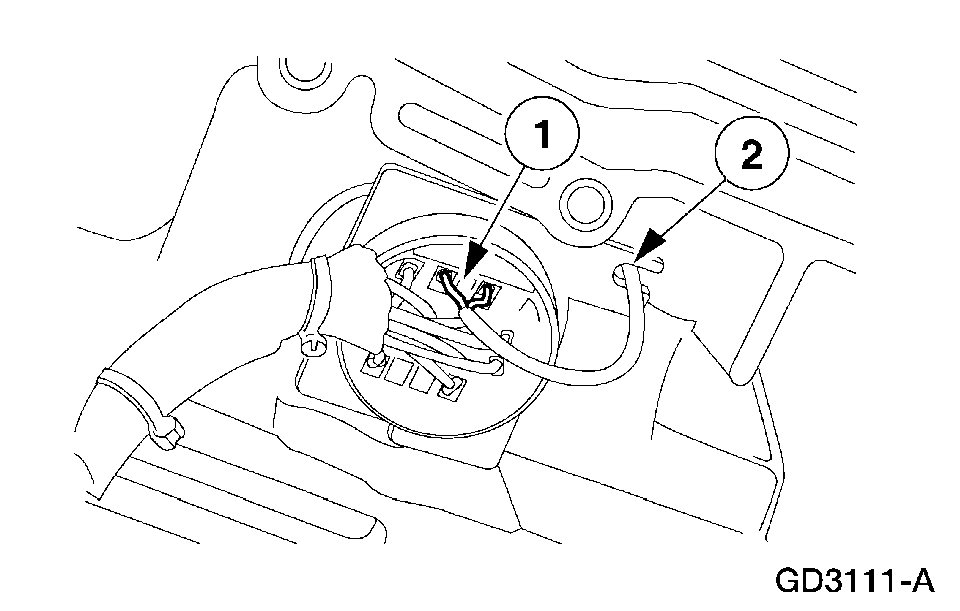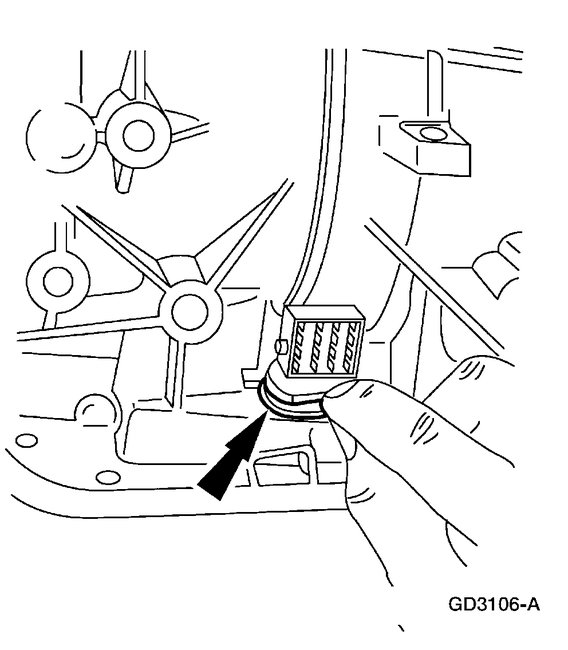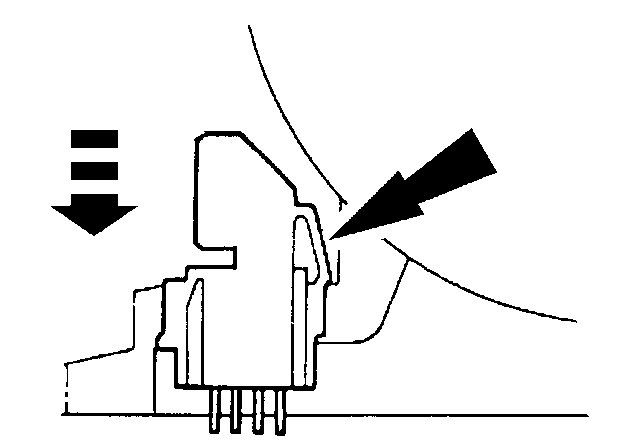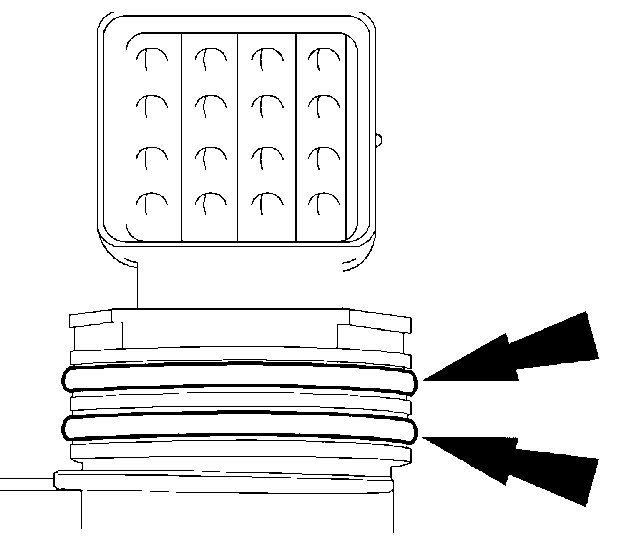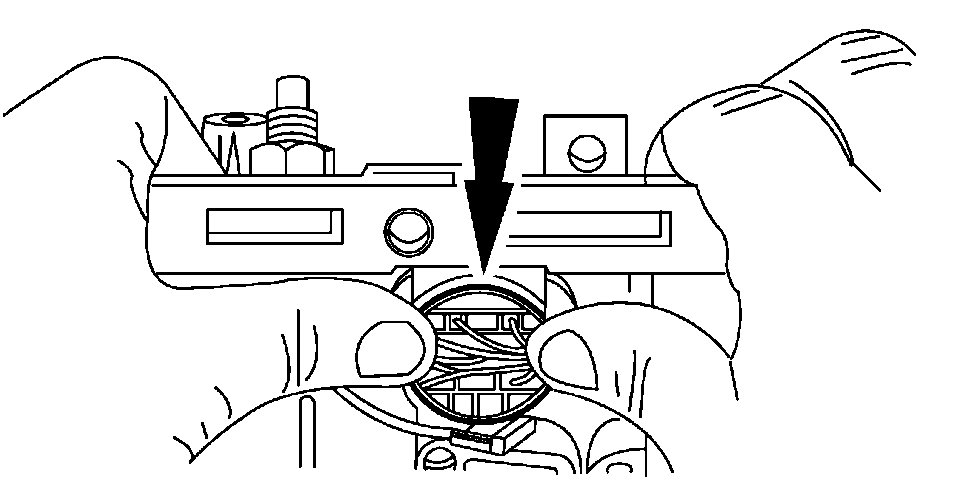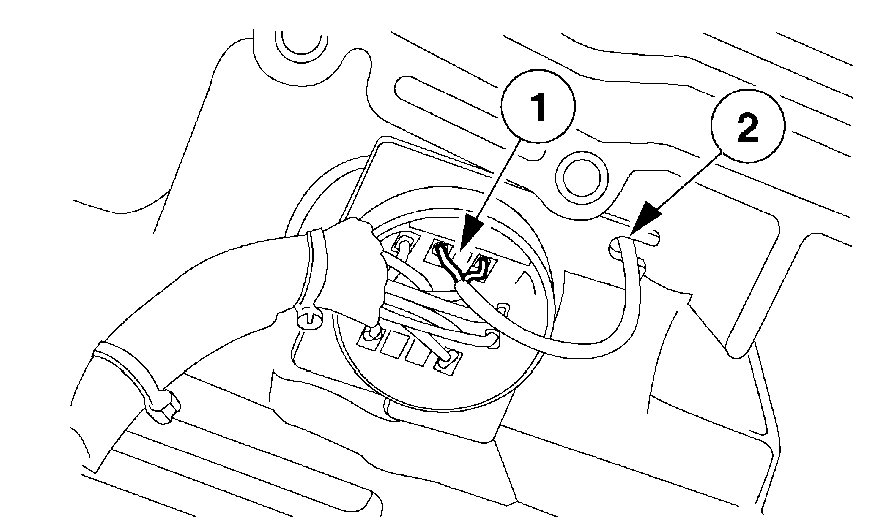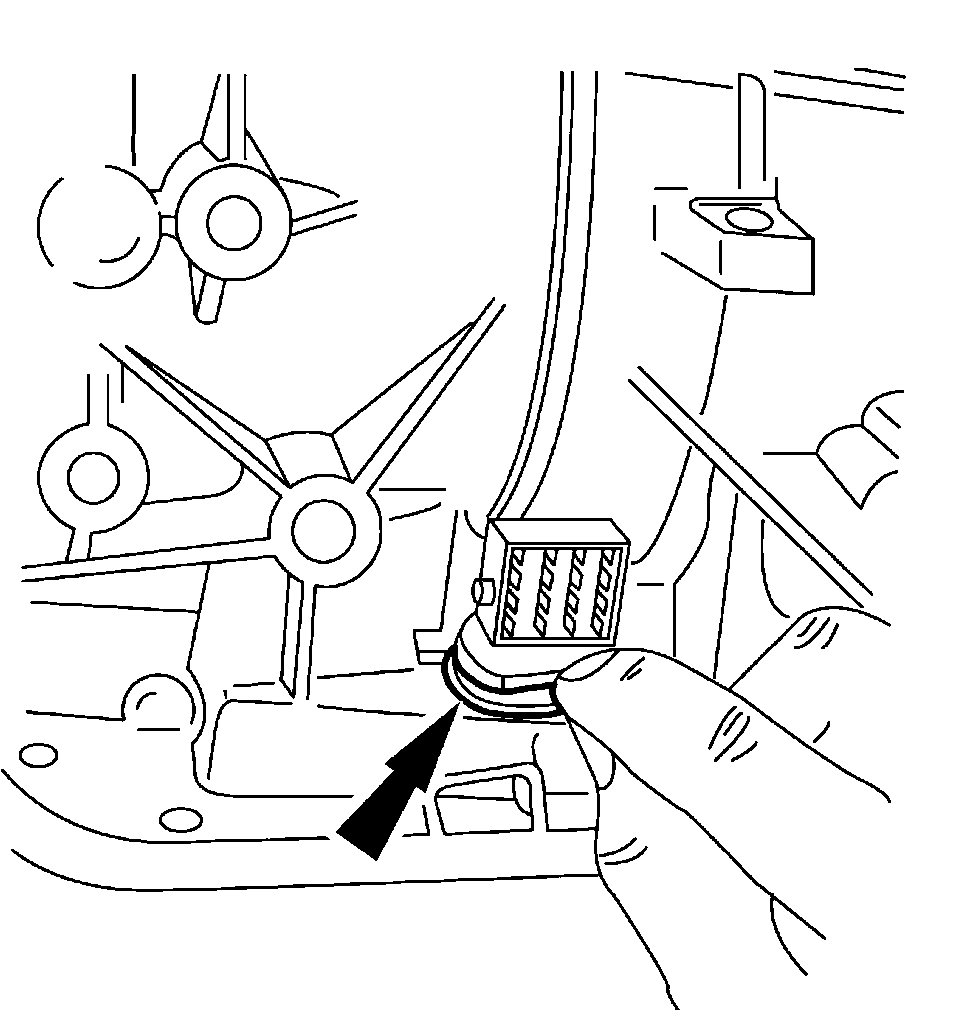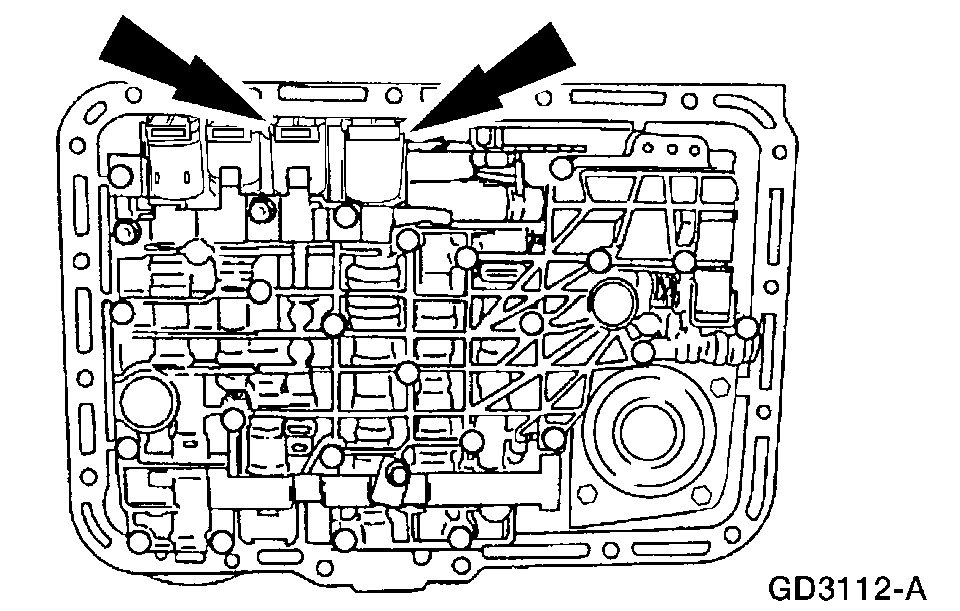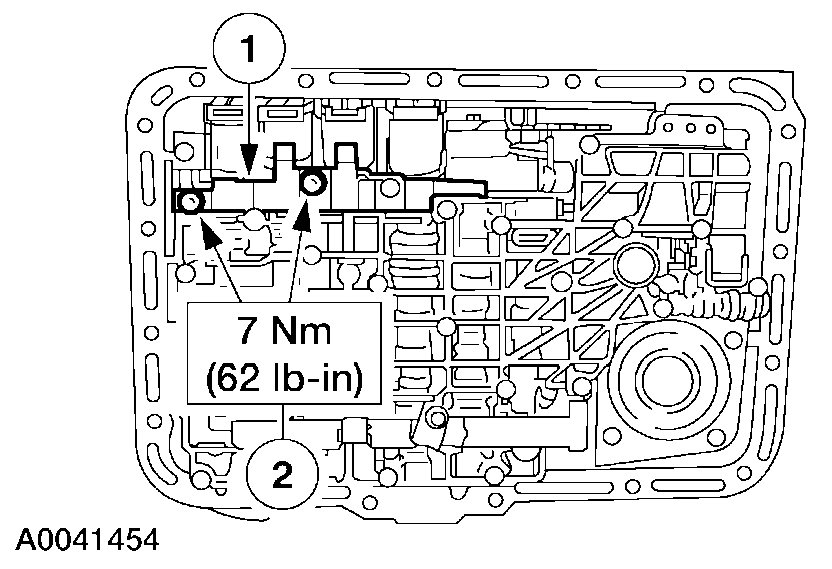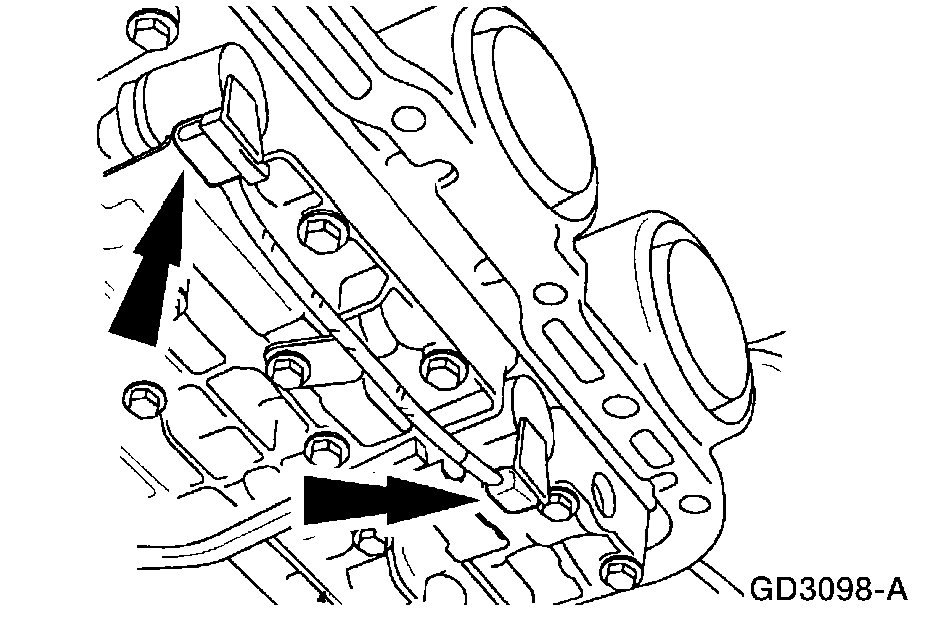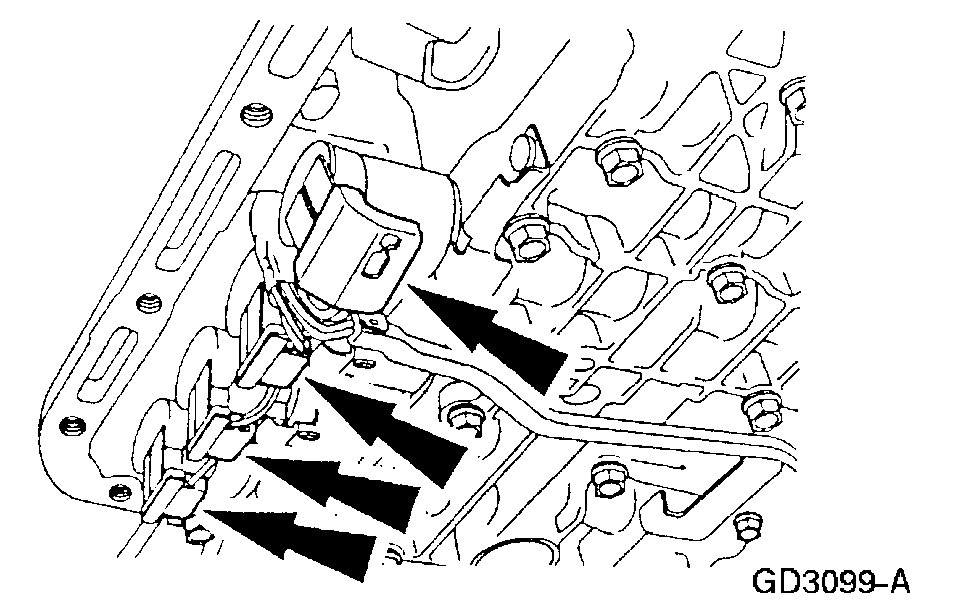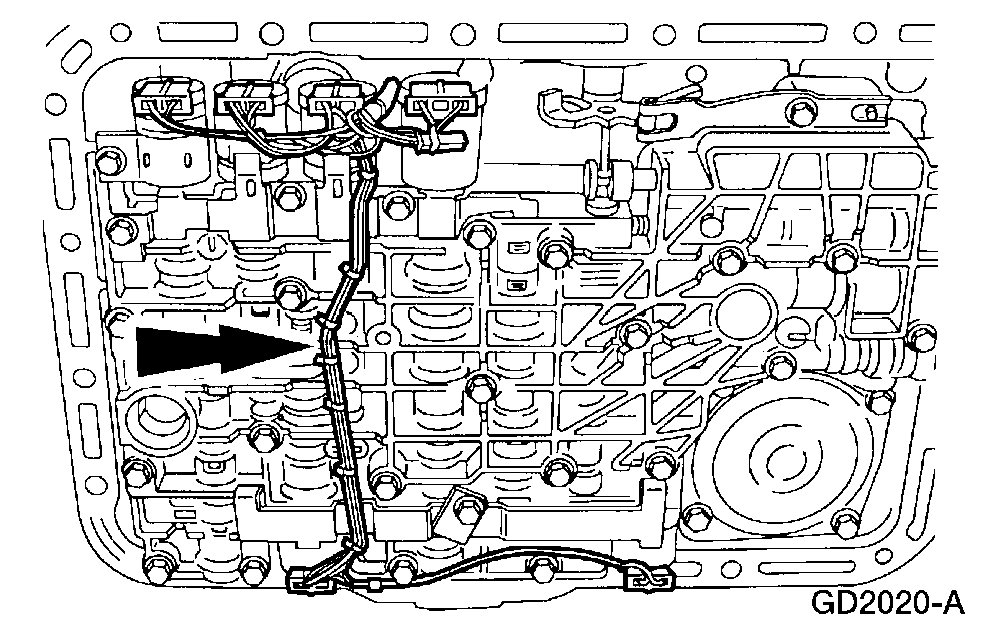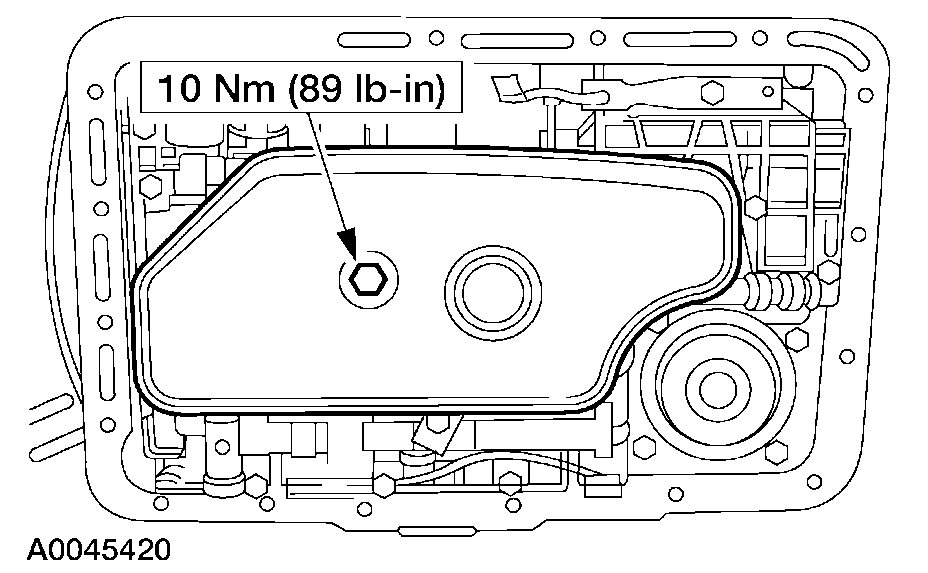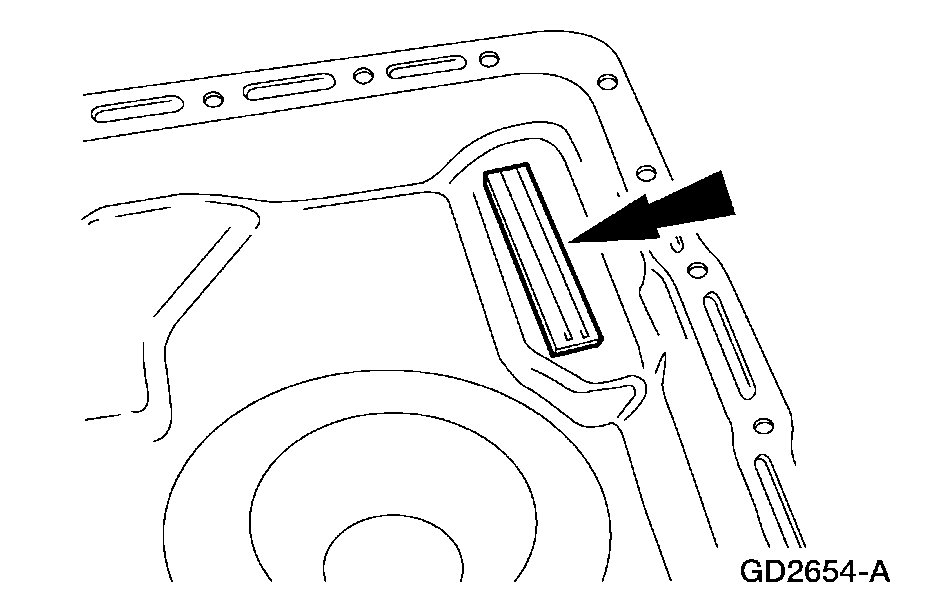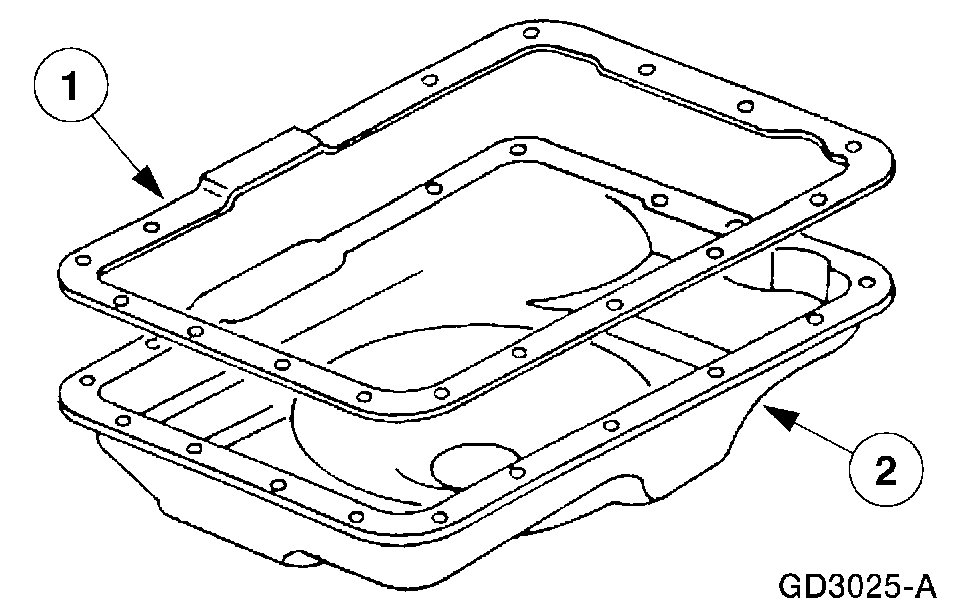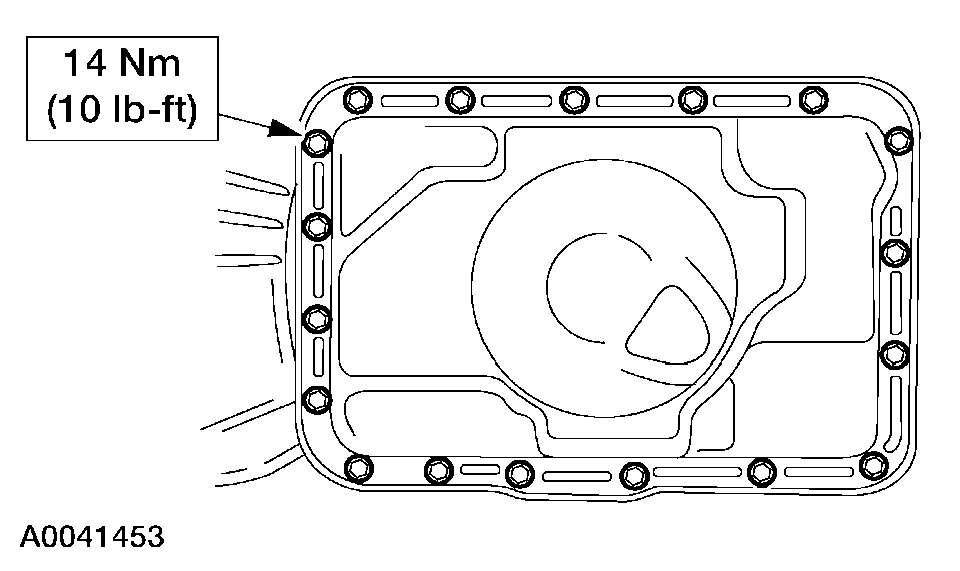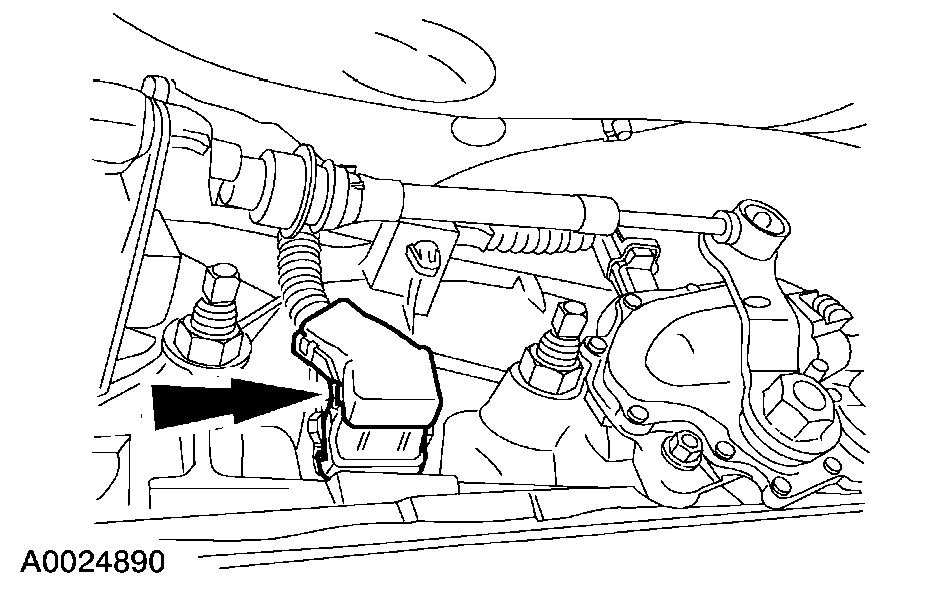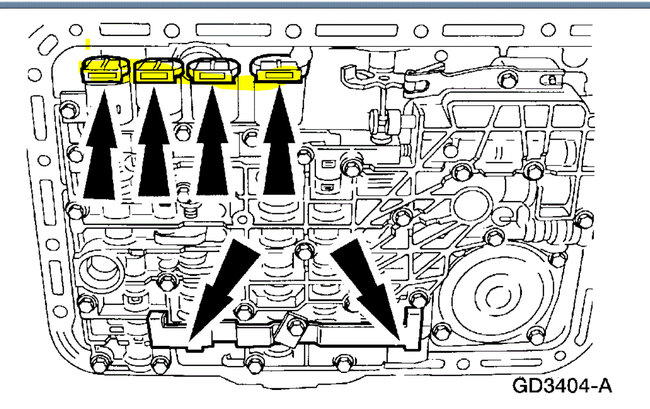Hi,
The shift solenoids are attached to the valve body in the transmission. If this is something that happened all at once, I would suggest checking the wiring harness in the transmission (internal harness) to make sure nothing has happened.
Here are the directions for servicing the harness. Take a look through this and let me know if it helps.
____________________________
2004 Ford Truck Ranger 2WD V6-4.0L VIN E
Internal Harness Service
Vehicle Transmission and Drivetrain Automatic Transmission/Transaxle Service and Repair Procedures Automatic Transmission - 5R44E and 5R55E Internal Harness Service
INTERNAL HARNESS SERVICE
Material
Removal
1. With the vehicle in NEUTRAL, position it on a hoist.
pic 1
2. Disconnect vehicle harness from transmission case (16-pin) connector.
pic 2
3. Drain transmission fluid.
Remove all the transmission fluid pan screws except for two in the front. Loosen the two front transmission fluid pan screws. Pry the rear of the transmission fluid pan down and allow fluid to drain. After fluid is drained, remove the front two transmission fluid pan screws.
pic 3
4. Remove the transmission fluid pan.
1. Remove the transmission fluid pan.
2. Remove and discard the transmission fluid pan gasket.
pic 4
5. NOTE: The main control assembly does not need to be removed.
Remove the transmission fluid filter.
1. Remove the transmission fluid filter screw.
2. Remove the transmission fluid filter.
pic 5
6. Clean and inspect the transmission fluid pan and magnet. Clean all mating surfaces.
pic 6
7. Remove main control valve body wire loom.
Carefully lift up on wire loom guide and protector and disengage the retaining pins from the solenoid clamps.
pic 7
8. Disconnect the solenoid electrical connectors.
1. Disconnect the SSA, SSB, SSC, and the SSD electrical connectors.
2. Disconnect the torque converter clutch (TCC) solenoid electrical connector.
3. Disconnect the electronic pressure control (EPC) solenoid electrical connector.
pic 8
9. CAUTION: The TCC solenoid and converter modulator valve may pop out of their bore. This may damage the solenoid or converter modulator valve.
CAUTION: Shift solenoids may pop out of their bore. This may damage the solenoids.
Remove the EPC and SSB solenoids.
1. Remove the solenoid clamp screws.
2. Remove the solenoid clamp.
3. Remove the EPC and SSB solenoids.
pic 9
10. CAUTION: Do not pry on the other wires or damage the connector case surface.
Disconnect the turbine shaft speed (TSS) sensor electrical connector from the transmission case (16-pin) electrical connector.
1. Disconnect the TSS sensor electrical connector.
2. Remove from the TSS sensor wire locator.
pic 10
11. CAUTION: Do not overstretch the retaining spring.
Remove the transmission case (16-pin) electrical connector retaining spring.
pic 11
12. CAUTION: Do not damage the connector or harness.
Remove the transmission case (16-pin) electrical connector.
Compress the tabs on the transmission case (16-pin) electrical connector.
Push the transmission case (16-pin) electrical connector out of transmission case.
Installation
pi 12
1. NOTE: Make sure the tab is in the lock position.
NOTE: Install new O-rings on the transmission case (16-pin) electrical connector.
Install the transmission case (16-pin) electrical connector.
Lubricate the transmission case (16-pin) electrical connector O-rings with petroleum jelly.
pic 13
2. Press the transmission case (16-pin) electrical connector through the case until a click is heard.
pic 14
3. CAUTION: Align the slot on the TSS sensor electrical connector with the slot in the 16-pin case connector.
Install the TSS sensor wire.
1. Install TSS sensor wire into (16-pin) case connector.
2. Install TSS sensor wire into the locator.
pic 15
4. CAUTION: Do not overstretch the retaining spring.
Install the transmission case (16-pin) electrical connector retaining spring.
pic 16
5. Install the EPC and SSB solenoids.
pic 17
6. CAUTION: The solenoid clamp must be installed in the TCC and EPC solenoid grooves, shift solenoid pockets and the No. 204 plug.
Install the solenoid clamp.
1. Position the solenoid clamp on the main control valve body.
2. Install the solenoid clamp screws.
pic 18
7. Connect the SSA and SSC shift (SS) solenoid electrical connectors.
pic 19
8. Connect the TCC, SSD, SSB, and EPC solenoid electrical connectors.
pic 20
9. CAUTION: Excessive pressure may break the retaining pins.
Install the wire harness guide and protector.
Align the retaining pins to the holes in the solenoid clamps and gently press in the wire harness guide and protector.
pic 21
10. Install the transmission fluid filter and fluid filter screw.
pic 22
11. Position the oil pan magnet in the transmission fluid pan.
pic 23
12. Install the transmission fluid pan.
1. Position a new transmission fluid pan gasket on the transmission fluid pan.
2. Align and install the transmission fluid pan.
Loosely install the transmission fluid pan screws.
pic 24
13. Tighten the transmission fluid pan screws.
Tighten the transmission fluid pan screws in a crisscross sequence.
pic 25
14. Connect vehicle harness to transmission (16-pin) connector. Make sure lock is fully engaged.
15. NOTE: Start with a minimum of 3.7 liters (4 quarts) clean automatic transmission fluid.
Fill transmission with clean automatic transmission fluid to the correct fluid level.
_____________________________
If you look at pic 26, I highlighted the shift solenoids. These solenoids are what cause the transmission to shift from one gear to the next. When actuated, the allow fluid to flow in a different direction and engage different clutch packs.
As far as a kick down cable, there isn't one on this vehicle.
Also, keep in mind there could be a pressure related issue causing the issues with the shifting.
Let me know if this helps. Also, let me know if you have scanned the computer to see if there are any diagnostic trouble codes. If you haven't, here is a link that explains how it's done.
https://www.2carpros.com/articles/ford-lincoln-mercury-obd1-1995-and-earlier-diagnostic-trouble-code-definition-and-retrieval
Let me know if you have other questions.
Take care,
Joe
Images (Click to make bigger)
Saturday, November 7th, 2020 AT 4:18 PM
